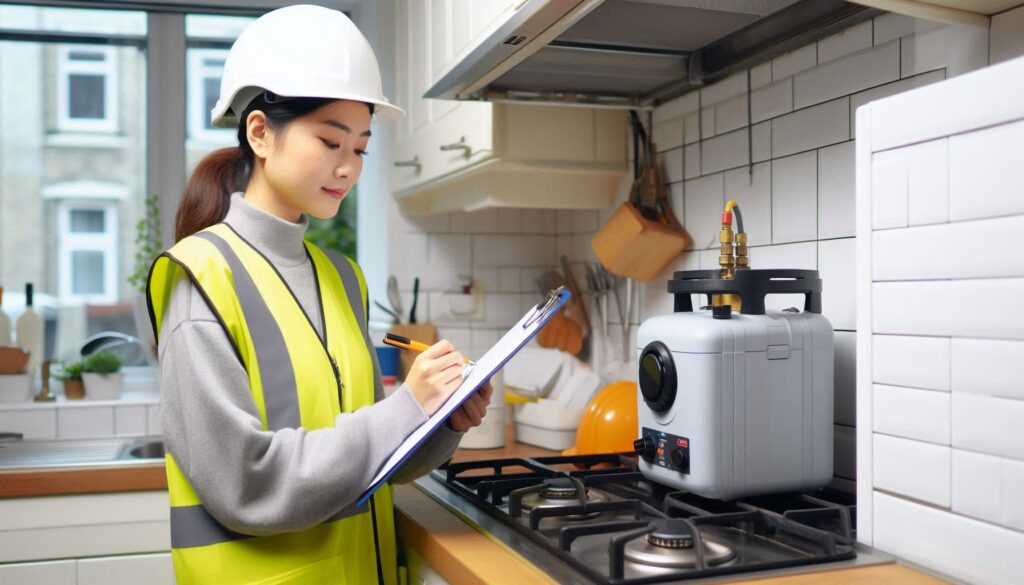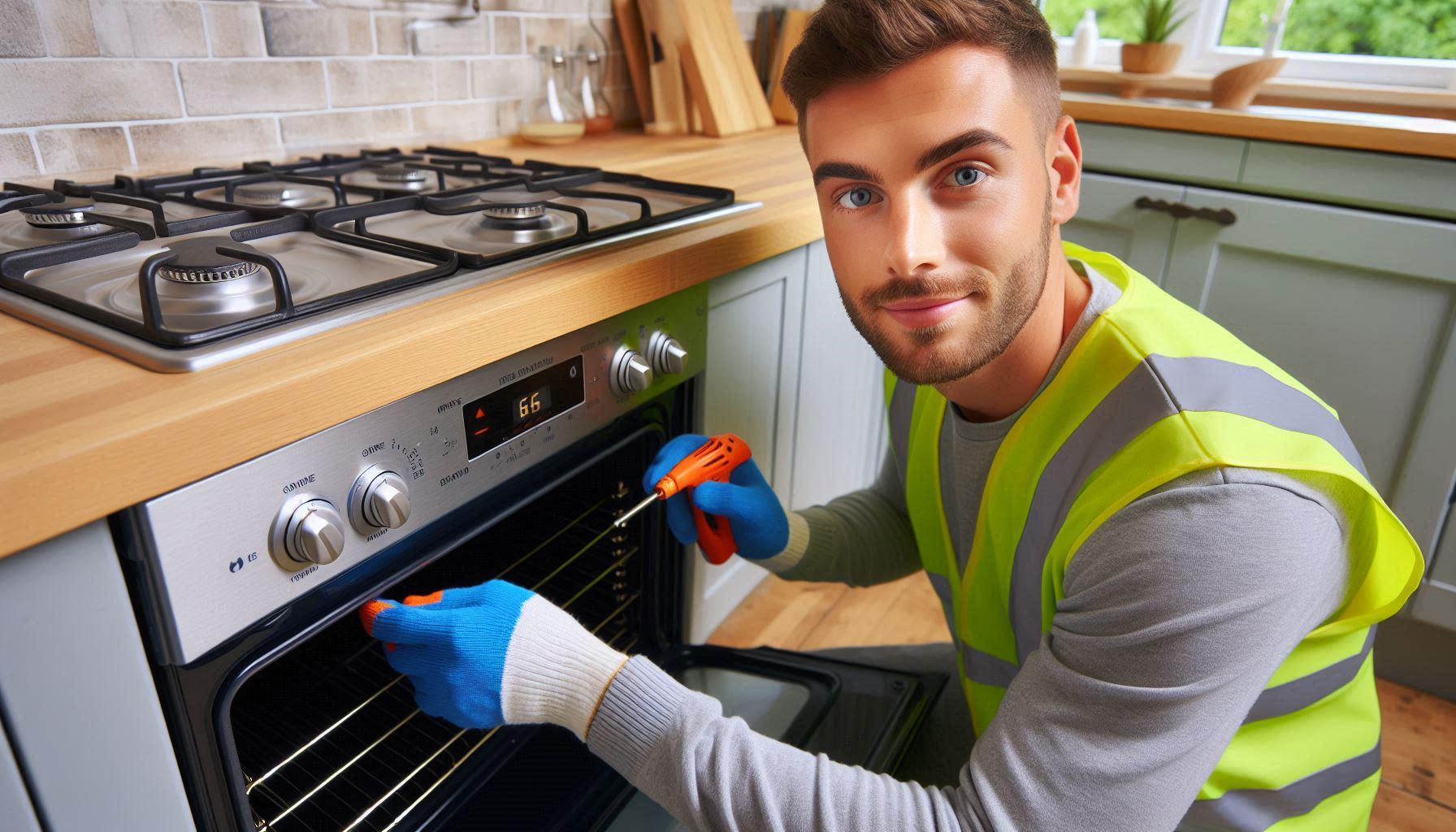
In London, where many homes rely on gas heating and cooking, proper ventilation is vital for both safety and comfort. It helps gas appliances run efficiently while preventing harmful fumes, like carbon monoxide, from building up indoors. Following gas ventilation standards protects residents and improves the performance of every appliance in the home.
For landlords, homeowners, and tenants, understanding appliance airflow safety is essential. Without enough ventilation, gas may burn improperly, leading to dangerous air quality and higher energy costs. This guide explains why ventilation matters, how to stay compliant with UK safety rules, and what every London property owner should do to maintain a healthy, well-ventilated environment.
In the UK, the Gas Safe Register enforces strict gas ventilation standards to ensure gas systems operate safely. These rules define how much air each appliance needs based on its size, type, and location.
In London’s compact homes and apartments, ventilation is often limited, especially in older buildings. Every gas appliance—from boilers to cookers—requires a steady air supply for clean combustion. If vents or flues are blocked, harmful gases like carbon monoxide can form.
To maintain appliance airflow safety, residents should check vents frequently, keep flues clear, and make sure rooms with gas equipment have proper airflow. Regular attention prevents unsafe pressure buildup, improves efficiency, and reduces the risk of gas-related hazards.
Gas appliances need oxygen to burn fuel efficiently and safely. When there isn’t enough air, incomplete combustion occurs, producing carbon monoxide—a silent but deadly gas. That’s why meeting gas ventilation standards is a critical part of home safety in London.
Older or tightly sealed homes often struggle with limited airflow, which can reduce combustion efficiency. Installing vents, extractor fans, or flues ensures a continuous oxygen supply and keeps gas systems safe.
Maintaining appliance airflow safety helps appliances perform better and last longer. With proper ventilation, flames burn cleanly, energy use stays efficient, and the risk of harmful fumes drops significantly.
Not all gas appliances are built the same, but each one depends on adequate airflow to function safely. Common examples found in London homes include:
Each appliance type falls under specific gas ventilation standards, dictating how much airflow is needed. Ensuring appliance airflow safety involves understanding these requirements and scheduling regular inspections by Gas Safe registered engineers.
When ventilation is inadequate, the consequences can be severe. Incomplete combustion produces carbon monoxide (CO), which can accumulate indoors without any visible warning. Prolonged exposure leads to headaches, nausea, dizziness, or even death in extreme cases.
In London, where many homes are tightly sealed for energy efficiency, the risk of CO poisoning rises if gas ventilation standards aren’t met. Modern homes often have double glazing and insulation that trap air inside, making intentional ventilation systems even more critical.
Maintaining appliance airflow safety means keeping vents open, ensuring flues are unobstructed, and never blocking air bricks—even during cold months. It’s always safer to address drafts through controlled ventilation rather than by sealing vents.
To ensure your gas system meets gas ventilation standards, several components must work together effectively:
Each part contributes to appliance airflow safety, maintaining a steady balance of incoming and outgoing air. London residents should ensure that these systems remain free from dust, paint, or obstruction. Annual inspections are highly recommended to confirm everything functions properly.

Many London homeowners aren’t sure whether their kitchens, utility rooms, or boiler cupboards have proper airflow. A quick assessment can help identify potential problems:
Following gas ventilation standards helps prevent hazardous gas buildup and ensures steady performance. Paying attention to appliance airflow safety reduces long-term risks, improves energy efficiency, and creates a more comfortable living environment.
In London’s smaller flats or apartments, space constraints often make proper ventilation more challenging. Cookers or boilers may be installed in compact corners or shared utility spaces, limiting airflow.
Complying with gas ventilation standards in these environments requires creative solutions. For example, installing slim extractor fans or passive vents near cooking areas ensures air circulation without compromising space.
When designing for appliance airflow safety, it’s best to avoid positioning gas cookers beneath windows or directly beside fridges, as this can disrupt airflow. Consulting with a Gas Safe engineer during kitchen planning ensures that both layout and safety are optimized.
Under UK law, landlords and homeowners must comply with gas ventilation standards set by the Gas Safety (Installation and Use) Regulations 1998. These laws require that all gas appliances are installed and maintained safely, with adequate ventilation and access for servicing.
In London, landlords must also provide tenants with annual Gas Safety Certificates confirming compliance. Failing to maintain appliance airflow safety can result in fines, legal penalties, or even property insurance invalidation.
By keeping vents open, servicing boilers annually, and hiring qualified engineers, landlords protect both tenants and their investments while maintaining a safe living environment.
Annual inspections by Gas Safe registered engineers are the best way to ensure ongoing compliance with gas ventilation standards. Professionals use specialized equipment to test combustion efficiency, check for blockages, and verify proper airflow throughout the system.
These experts also help property owners understand how to maintain appliance airflow safety between visits. For instance, homeowners can clean external vents regularly, avoid painting over grilles, and monitor carbon monoxide alarms for early warning signs.
In London, where most homes use gas heating, these inspections are not optional—they’re a legal and safety necessity.
Many older London properties were built long before modern gas ventilation standards were established. These homes often rely on outdated or undersized vents, which can’t meet today’s safety requirements.
To maintain appliance airflow safety, older homes should be retrofitted with improved ventilation systems, such as upgraded flues, extractor hoods, or air bricks. Even simple solutions like replacing blocked grilles or adding extra ventilation openings can make a big difference.
Professional assessment ensures these upgrades are carried out correctly and that historic properties remain compliant without compromising their structure or aesthetics.
Homeowners often worry that adding ventilation might reduce energy efficiency by letting heat escape. However, modern systems designed under current gas ventilation standards ensure that airflow and insulation work together efficiently.
Balanced ventilation systems maintain healthy indoor air while preventing excess heat loss. Maintaining appliance airflow safety actually contributes to energy efficiency by ensuring clean combustion and reducing fuel waste.
In London, combining good insulation with smart ventilation keeps energy bills lower and indoor air quality higher.
The importance of ventilation in gas appliances cannot be overstated. Following gas ventilation standards protects your home from dangerous gases, enhances appliance performance, and ensures compliance with London’s safety regulations.
Whether you’re a homeowner, tenant, or landlord, maintaining appliance airflow safety should be a top priority. Regular inspections, proper installations, and attention to airflow are simple but powerful steps that safeguard lives and property.
In a city where millions rely on gas every day, good ventilation isn’t just about comfort—it’s about survival. Stay safe, stay compliant, and always trust professionals to keep your gas systems running cleanly and securely.

